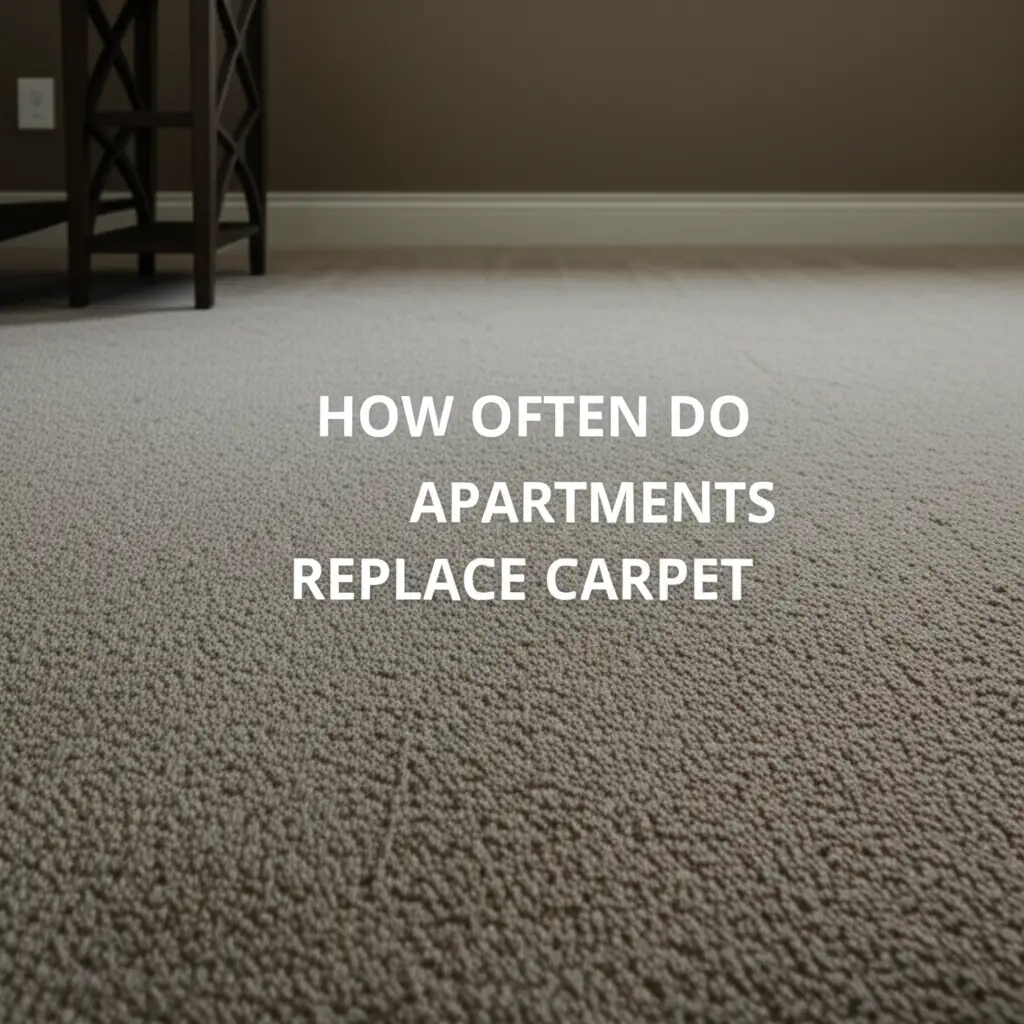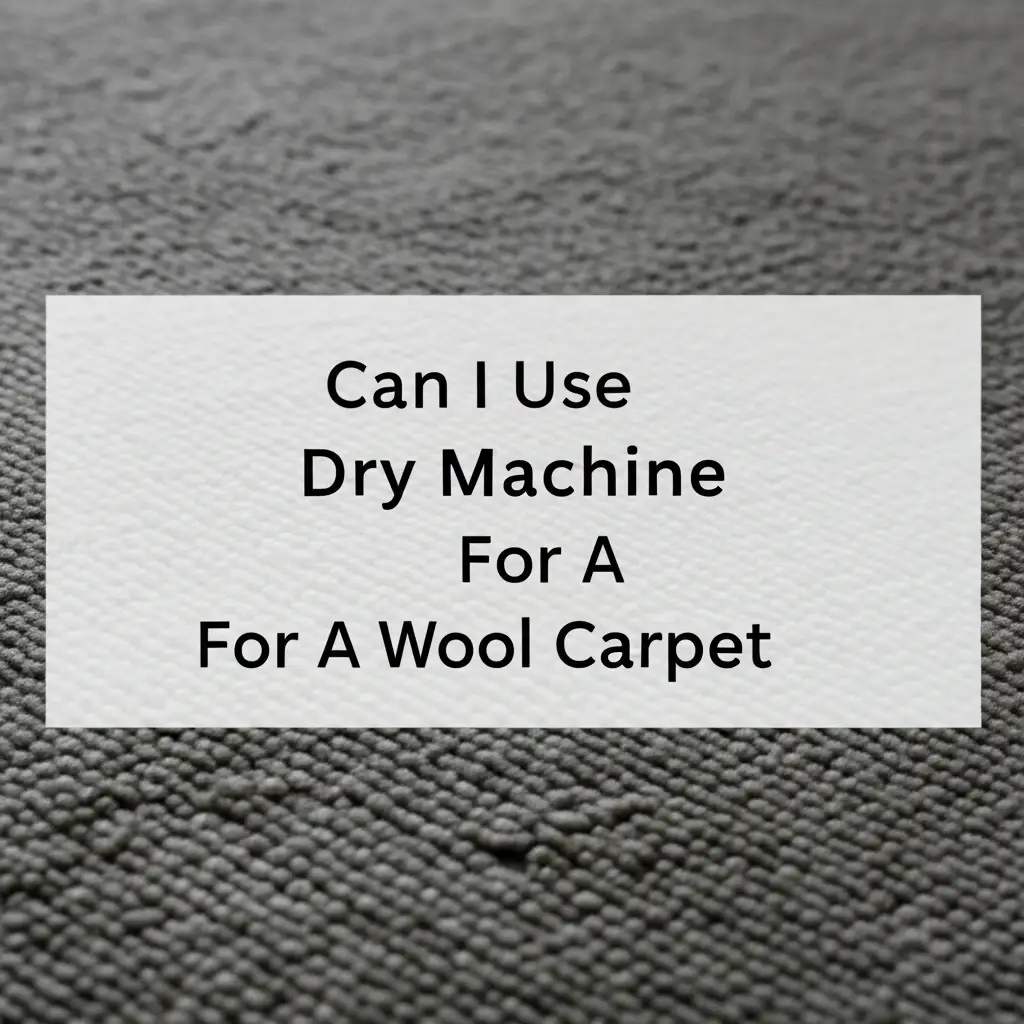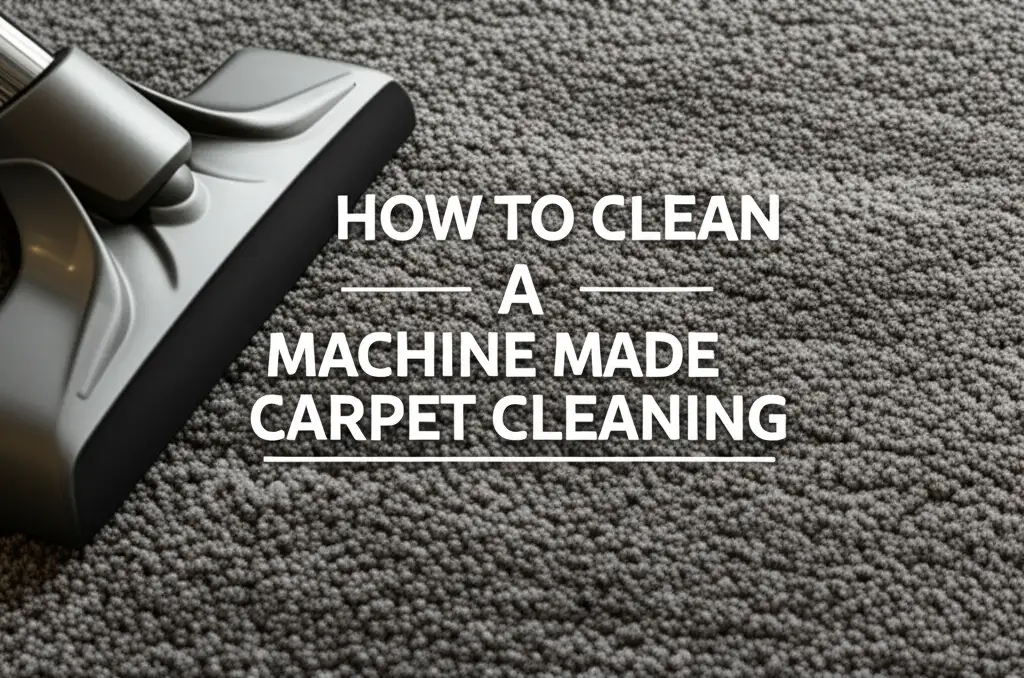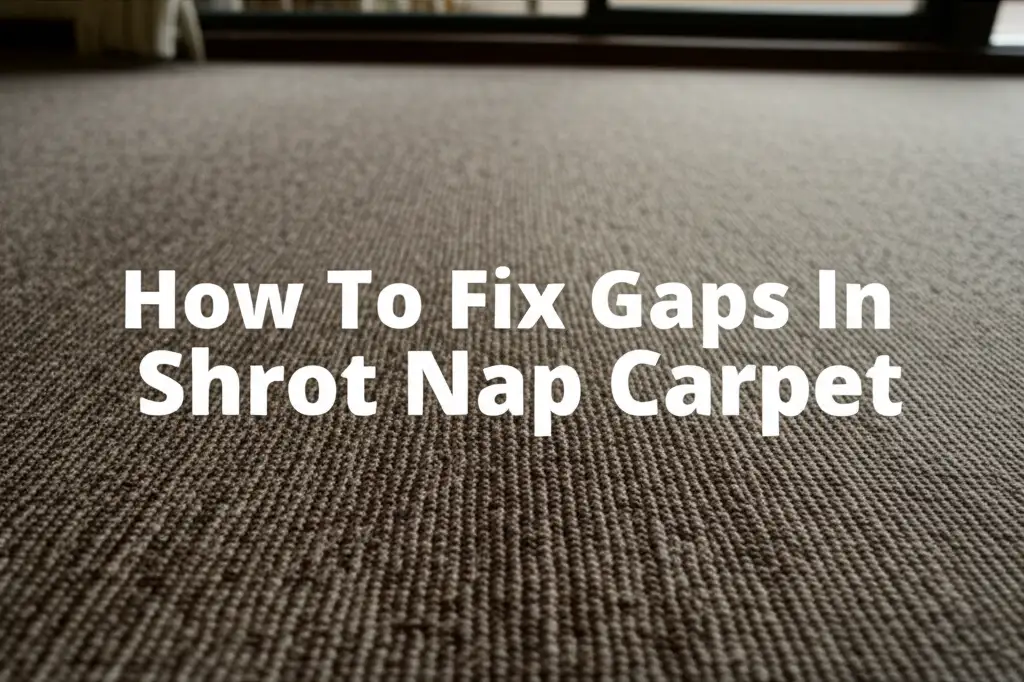· Elira Thomsen · Rental Living · 14 min read
How Often Do Apartments Replace Carpet

Understanding How Often Apartments Replace Carpet
Have you ever wondered about the lifespan of the carpet in your apartment? Or perhaps you are a property manager trying to set maintenance schedules. The question of “How often do apartments replace carpet?” comes up frequently for both tenants and landlords. Understanding the factors involved helps clarify expectations.
This guide explores the typical frequency of carpet replacement in rental properties. We will discuss what determines replacement schedules. We will also cover tenant responsibilities and landlord obligations. You will learn about the difference between normal wear and tear and tenant-caused damage. Our goal is to give you a clear picture of apartment carpet care and replacement.
Takeaway
Here are the key points regarding apartment carpet replacement:
- Average Lifespan: Apartment carpets typically last 5-7 years, but this varies greatly.
- Key Factors: Foot traffic, pets, cleaning habits, and original carpet quality influence lifespan.
- Wear and Tear: Landlords pay for replacement due to normal wear and tear.
- Tenant Damage: Tenants are responsible for damage beyond normal wear.
- Communication: Clear communication between tenant and landlord is important.
- Lease Agreement: Always check your lease for specific carpet clauses.
Apartments generally replace carpet every five to seven years. This timeline accounts for normal wear and tear from tenant use. However, the exact frequency depends on factors like carpet quality, foot traffic, and tenant care. Significant damage or health concerns can prompt earlier replacement.
The Standard Lifespan of Apartment Carpet
Apartment carpets have a defined lifespan. Most property managers and landlords expect carpets to last between five and seven years. This period assumes normal use and regular cleaning. Carpet manufacturers often provide durability ratings. These ratings help determine how long a carpet can withstand daily activity.
High-quality carpets might last longer, possibly up to ten years. Lower-grade carpets, common in some rentals, may need replacement sooner. They might show wear and tear signs in just three to five years. This average lifespan helps landlords budget for future replacements. It also sets a general expectation for tenants regarding carpet condition.
The useful life of a carpet is not a fixed rule. It is an estimation based on general wear. Property owners consider this expected life when assessing replacement needs. This standard lifespan is a common guideline in the rental industry. It balances cost-effectiveness for landlords with reasonable living conditions for tenants.
Factors Influencing Carpet Replacement Frequency
Many elements affect how quickly an apartment carpet wears out. These factors directly influence how often apartments replace carpet. Understanding them helps both tenants and landlords.
Tenant Habits and Lifestyle
The way a tenant lives in an apartment greatly impacts carpet life. A tenant who removes shoes indoors helps preserve carpet fibers. Frequent vacuuming also prevents dirt from embedding. Spills, if not cleaned immediately, can cause lasting stains. A tenant’s daily routine contributes significantly to carpet longevity.
Pet Presence
Pets introduce unique challenges for carpets. Accidents can cause odors and deep stains that professional cleaning cannot remove. Pet claws can snag and pull carpet loops. This leads to visible damage over time. Apartments with pets often require carpet replacement more frequently. Landlords may charge pet deposits to cover potential damage.
Foot Traffic and Occupancy
High-traffic areas show wear faster. Hallways, living rooms, and areas near entry doors get the most foot traffic. A single person apartment sees less wear than a unit with a family of four. More people mean more friction and dirt accumulation. This increased activity shortens the carpet’s useful life.
Maintenance and Cleaning Schedule
Regular and proper cleaning extends carpet life. Professional steam cleaning removes deep-seated dirt and allergens. Neglecting regular vacuuming allows dirt to act like sandpaper, damaging fibers. Poor cleaning methods can also harm carpet material. A consistent maintenance schedule is important for carpet preservation. You can learn more about proper cleaning techniques, such as how carpet cleaning works.
Original Carpet Quality
The quality of the carpet installed makes a big difference. Cheaper carpets use less durable fibers and thinner padding. They are designed for a shorter lifespan. Higher-quality carpets resist matting and staining better. They withstand more traffic before showing significant wear. Landlords choose carpet quality based on budget and expected unit turnover.
Understanding Normal Wear and Tear vs. Tenant Damage
This distinction is important when apartments replace carpet. It affects who pays for the replacement. Landlords cover normal wear and tear. Tenants are responsible for damage.
Defining Normal Wear and Tear
Normal wear and tear describes the expected deterioration of a property from ordinary use. For carpets, this means minor fading from sunlight, slight matting in high-traffic areas, or minor threadbare spots that occur over years. These are not caused by neglect or abuse. They happen naturally over time, regardless of how careful a tenant is. A carpet that has reached its expected lifespan, typically 5-7 years, is often considered worn out due to normal use. This means the landlord is responsible for its replacement cost.
Defining Tenant Damage
Tenant damage goes beyond normal wear and tear. It involves destruction or misuse that significantly reduces the carpet’s value or usability. Examples include large, unremovable stains from spills, cigarette burns, pet urine odors that permeate the padding, tears, or excessive fraying from pet claws. This type of damage is preventable with reasonable care. When such damage occurs, the tenant becomes financially responsible. This responsibility often comes out of the security deposit. Understanding this difference helps avoid disputes when a lease ends. Landlords use documentation like move-in checklists to assess the carpet’s condition at the start and end of a tenancy. If you have specific stains, like how to clean cheese out of carpet, addressing them promptly can prevent them from becoming “damage.”
Security Deposit Implications
The security deposit protects the landlord against tenant-caused damage. If a carpet needs replacement due to tenant damage, the landlord can deduct the cost from the security deposit. However, landlords cannot charge for the full replacement cost of an old carpet. They must account for the carpet’s depreciated value. For example, if a carpet had an expected life of seven years and the tenant moved out after five years, the landlord can only charge for the remaining two years of value. This prevents landlords from unfairly profiting from a tenant’s damage. Tenants should know their rights regarding security deposit deductions. Sometimes, tenants might try to negotiate carpet charges or replacement terms at the end of their lease.
Landlord Obligations and Tenant Rights Regarding Carpet
Landlords have duties, and tenants have rights concerning apartment carpets. These are often outlined in lease agreements and state laws.
Landlord Responsibilities
Landlords must provide a habitable living space. This includes maintaining the property’s structural integrity and essential systems. While specific laws on carpet replacement vary by state, landlords generally must replace carpets that are no longer habitable. This means carpets that are severely matted, stained, or pose a health risk due to mold or extreme wear. They are responsible for replacing carpets that have reached the end of their useful life due to normal wear and tear. They cannot pass these costs to the tenant. Landlords also have a duty to ensure new carpets meet basic safety and cleanliness standards.
Tenant Rights
Tenants have the right to a clean and safe living environment. If the carpet becomes unsafe or unsanitary due to normal wear, tenants can request replacement. Tenants also have the right to get their security deposit back, minus costs for damage they caused. They should not be charged for normal wear and tear. Tenants should document the carpet’s condition upon move-in with photos or videos. This evidence helps protect them from unfair charges when they move out. Tenants should always read their lease agreement carefully. It often details responsibilities for carpet care and replacement.
Lease Agreement Clauses
Most lease agreements include specific clauses about property maintenance, including carpets. These clauses define tenant responsibilities for cleaning and damage. They might also state how the security deposit will be used. Some leases may specify professional carpet cleaning before move-out. Always understand these clauses before signing. They form the legal basis for any disputes later on.
When Cleaning Isn’t Enough: Signs an Apartment Carpet Needs Replacing
Sometimes, even the best cleaning cannot restore a carpet. This signals that it needs replacement. Landlords look for these specific signs. Tenants can also point them out.
Permanent Stains and Discoloration
Deep, set-in stains are a clear sign of irreversible damage. These stains do not lift with professional cleaning. They may include pet urine, dark food spills, or chemical discoloration. Discoloration from sun exposure or heavy traffic can also make a carpet look old and dirty. If large areas show permanent stains, replacement is likely. You can try to dry clean a carpet for some issues, but deep stains often need more.
Persistent Odors
Carpets absorb odors from pets, smoke, and spills. Over time, these odors can become trapped in the carpet fibers and padding. Even after extensive cleaning, the smell might return. This often happens with pet urine, which can soak into the subfloor. A persistent, unpleasant odor indicates deep contamination. It means the carpet needs to go. This is a common health and comfort concern.
Excessive Matting and Fraying
Carpet fibers flatten and lose their springiness in high-traffic areas. This is called matting. The carpet looks dull and worn, even after vacuuming. Fraying occurs when fibers unravel or pulls appear. This is common at seams or edges. Severe matting and fraying affect the carpet’s appearance and comfort. They show the carpet has reached the end of its functional life.
Rips, Tears, and Burns
Obvious physical damage like large rips, tears, or cigarette burns means the carpet is compromised. These are typically not considered normal wear and tear. They usually point to tenant-caused damage. Such damage can be a tripping hazard. It compromises the carpet’s integrity. These damages almost always lead to replacement.
Health and Allergen Concerns
Old carpets can harbor allergens like dust mites, pet dander, and mold spores. This is especially true if the carpet has had moisture exposure. Even if cleaned, deeply embedded allergens can trigger respiratory issues. A landlord might consider replacing carpet if it poses a health risk to new tenants. This is a crucial factor for ensuring a habitable environment.
The Carpet Replacement Process in Apartments
When apartments decide to replace carpet, a specific process usually follows. This process involves planning, communication, and execution.
Scheduling and Notice to Tenants
If a carpet needs replacement while a tenant still occupies the unit, the landlord must provide proper notice. This notice allows the tenant to prepare for the disruption. The landlord schedules the work during business hours. They ensure the process causes minimal inconvenience. If replacement happens between tenants, scheduling is simpler. It takes place during the vacancy period.
Removal of Old Carpet
The first step is removing the old carpet. This involves cutting the carpet into manageable strips. Workers then pull up the old carpet and padding. They also remove any staples or tack strips left behind. This stage can be dusty. It reveals the subfloor underneath. Sometimes, the subfloor needs minor repairs or cleaning.
Subfloor Preparation
After removal, the subfloor is inspected and prepared. Any debris, dust, or old adhesive is cleaned away. Minor repairs, like patching small holes or leveling uneven spots, might be necessary. A clean, smooth subfloor is essential for proper new carpet installation. This step ensures the new carpet lays flat and lasts longer.
New Carpet Installation
New carpet is then cut to fit the room dimensions. Padding is laid down first, offering comfort and insulation. Then, the carpet is stretched taut and secured along the edges with tack strips. Seams are carefully joined to create a seamless look. Professional installers ensure a tight fit. They also ensure a clean finish. This process transforms the look and feel of the apartment. For a general idea of carpet replacement, you can view resources like how to replace carpet in 2002 suburban with rubber matting, which, while different, shows the physical process.
Post-Installation Cleanup and Inspection
Once the new carpet is installed, workers clean up any leftover materials. They vacuum the new carpet to remove loose fibers. The landlord or property manager inspects the work. They ensure the installation meets quality standards. This final check confirms the apartment is ready for the next tenant. Or, if occupied, ready for the tenant to return.
Proactive Measures to Extend Apartment Carpet Life
Both tenants and landlords can take steps to make apartment carpets last longer. These measures help delay replacement and maintain appearance.
For Tenants: Regular Cleaning and Care
Tenants play a vital role in carpet preservation. Regular vacuuming is essential. It removes dirt and grit that can damage fibers. Address spills immediately to prevent permanent stains. Using doormats at entrances traps dirt before it enters the apartment. Avoiding harsh chemical cleaners helps maintain carpet integrity. Following these simple steps significantly extends carpet life. For specific cleaning advice, consider guides like how to clean a machine-made carpet cleaning.
For Landlords: Quality Selection and Maintenance Schedules
Landlords can choose durable carpets suitable for rental environments. Opting for stain-resistant and wear-resistant fibers saves money long-term. Scheduling professional carpet cleaning between tenants is also important. This removes deep dirt and odors. Promptly addressing minor issues, like small tears, prevents them from worsening. Investing in good carpet from the start pays off.
Using Protective Measures
Placing rugs or runners in high-traffic areas, like hallways or in front of sofas, protects the underlying carpet. Chair mats under office chairs prevent damage from rolling wheels. Furniture coasters prevent indentations and tears from heavy furniture legs. These simple additions shield the carpet from concentrated wear and tear. They are effective and affordable solutions.
Promptly Reporting Issues
Tenants should report any carpet issues to the landlord quickly. This includes spills they cannot remove or sudden damage. Early reporting allows for quick intervention. It prevents small problems from becoming large, expensive ones. Landlords appreciate timely communication. It helps them maintain their property effectively. Open communication benefits both parties.
FAQ Section
Q1: How often do landlords have to replace carpet?
Landlords do not have a strict legal requirement to replace carpet at a set interval. They must replace it when it is no longer habitable. This includes severe damage, persistent odors, or health hazards. They are also responsible for replacement when the carpet reaches the end of its useful life due to normal wear and tear, typically 5-7 years.
Q2: Can a landlord charge for carpet replacement after a few years?
A landlord can charge for carpet replacement if tenant damage causes it. They cannot charge for normal wear and tear if the carpet has reached its expected lifespan. If the carpet still has remaining life, the landlord can only charge for its depreciated value. This prevents them from fully charging for an old carpet.
Q3: What is the average lifespan of apartment carpet?
The average lifespan of apartment carpet is generally considered to be 5 to 7 years. This is a common industry standard for depreciation. Factors like carpet quality, foot traffic, and tenant care can make this period shorter or longer. After this time, a carpet is often due for replacement due to normal wear.
Q4: How can tenants help extend carpet life?
Tenants can extend carpet life by vacuuming regularly, cleaning spills immediately, and using doormats. Avoiding harsh chemicals and wearing slippers indoors also helps. Reporting any damage or issues to the landlord quickly prevents problems from getting worse. These actions maintain the carpet’s appearance and condition.
Q5: What happens if I damage the carpet in an apartment?
If you damage the carpet beyond normal wear and tear, you are financially responsible. The landlord can deduct repair or replacement costs from your security deposit. The charge will consider the carpet’s age and remaining useful life. Documenting the carpet’s condition at move-in can protect you.
Q6: Do apartments replace carpet between every tenant?
No, apartments do not replace carpet between every tenant. They replace it only when it reaches the end of its useful life due to normal wear and tear or when a tenant causes significant damage. Between tenants, carpets are typically professionally cleaned unless extensive damage or extreme wear makes replacement necessary.
Conclusion
Understanding how often apartments replace carpet helps everyone involved. It sets clear expectations for both residents and property owners. The average lifespan for apartment carpets is around five to seven years. However, many factors can change this timeline. These include the quality of the carpet, the amount of foot traffic, and the care provided by tenants.
Tenants must recognize the difference between normal wear and tear and actual damage. Landlords are responsible for replacing carpets worn out by time and normal use. Tenants are responsible for significant damage they cause. Clear communication and a thorough understanding of your lease agreement are crucial. By taking good care of your apartment’s carpet and communicating any issues, you contribute to a better living environment. This knowledge promotes fair practices and helps maintain comfortable homes for everyone.
- apartment carpet replacement
- landlord responsibilities
- tenant rights
- carpet maintenance
- wear and tear
- rental property





